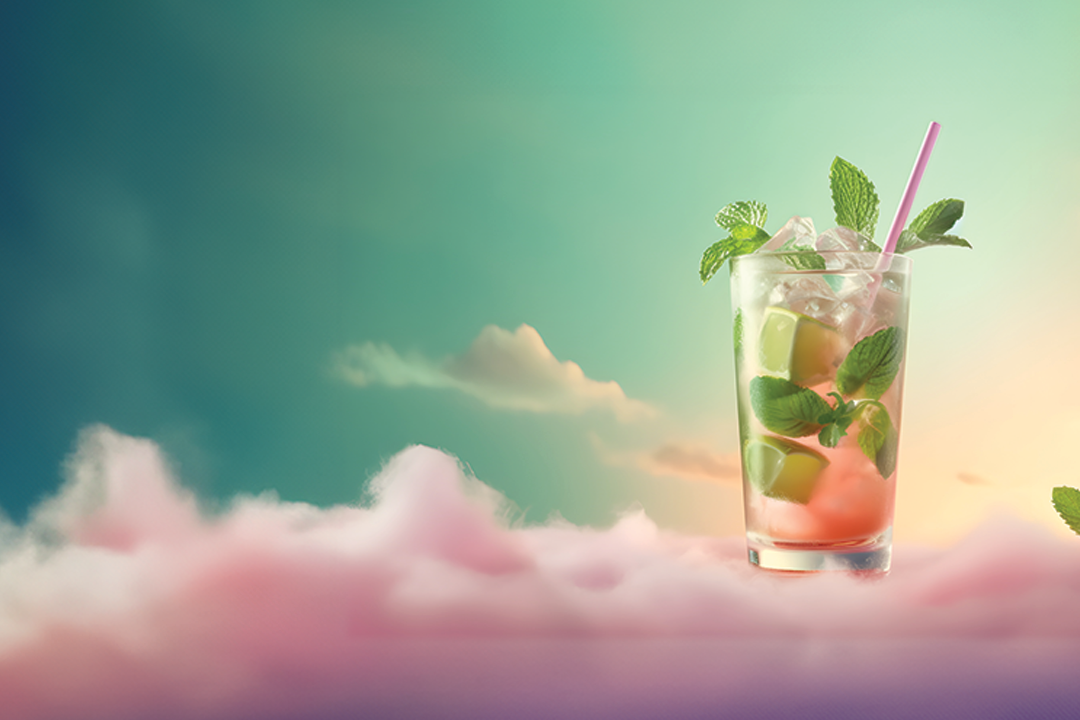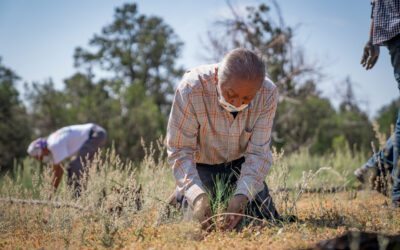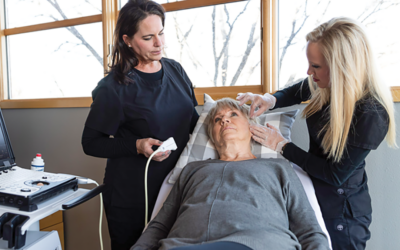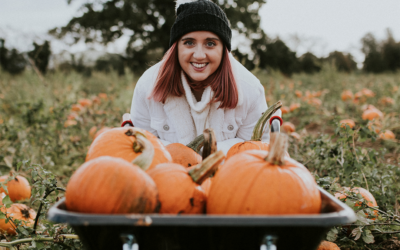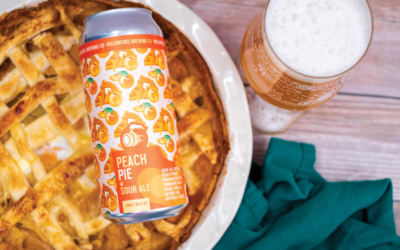When Nathan Robertson started as bar manager at Social in Fort Collins about 10 years ago, all of his young staff drank alcohol. Now only a few of them do.
“A lot of people are just not drinking these days for a lot of different reasons,” Robertson says. “The younger crowd is often making that choice for their health.”
This is why Social offers six to eight nonalcoholic cocktails on its monthly menu. Robertson’s staff seems to reflect the choices of younger generations, and he still wants to give them a reason to come inside.
“People who don’t want alcohol still want something that tastes good and isn’t just water or soda,” he says.
At Café Vino in Fort Collins, mocktails make up 30 to 40 percent of bar sales, according to Chad Heberden, bar manager. “It has really blown up lately. More people want to go out and not pay for it the next day.”
What it means to create a good mocktail has also evolved, Heberden says, creating endless possibilities for tasty nonalcoholic drinks. Nowadays, many of the mocktails on bar and restaurant menus are just as complex as their craft cocktails.
Crafting the perfect mocktail
There seem to be two schools of thought regarding mocktail creation. Some bartenders try to make drinks that taste similar to their boozy namesakes while others come up with flavorful concoctions that don’t taste like alcohol at all.
Taylar Stultz didn’t want her drinks to taste like alcohol when she started Herbal Mocktails, a mobile bar that she has at festivals, parties and other functions across Northern Colorado.
“I quit drinking in 2018,” she says. “It’s not that I had a problem with it. I just don’t like the taste of alcohol. I think it tastes gross.”
Stultz’s mocktails are made with homemade ingredients, including herbal infusions and tinctures, and without preservatives. They don’t mimic the taste of cocktails.
“I did it for two reasons,” she says. “First, for people who are struggling with alcohol, the taste can be a trigger for them. Second, kids are a big customer base for me.”
Since starting her mocktail bar in July 2022, Stultz says business has exploded. She too believes the younger crowd is helping push the mocktail movement.
“I can absolutely tell what generation someone is by what and how they order,” she says. “Boomers always ask me if there is some alcohol in the back I can add to it.” (P.S. There isn’t.)
Making good mocktails isn’t as easy as you’d think, particularly when using zero-proof spirits. Heberden says most zero-proof spirits taste like infused water, which is why it takes more than just swapping out the booze to make a nonalcoholic drink that tastes like a mojito or margarita. The one exception, he notes, is the nonalcoholic spirit used in his NA Aperol Spritz (see next page).
However, some zero-proof spirits can add flavor to mocktails. “You can take an NA gin, and it can have an interesting flavor profile in its own right, even if it doesn’t taste like gin,” Robinson says.
Chelsea Bowles, bar manager at Union Bar & Soda Fountain in Fort Collins, creates mocktails that either taste like alcoholic drinks or are their own thing.
“We make some that look just like an old fashioned,” Bowles says. “When I went to make an NA margarita, [I realized] you can’t just sub in an NA spirit. Sometimes you fail. But you just keep working it. It’s fun.”
When making drinks that aren’t supposed to taste like alcohol, Bowles tries to balance their sweetness with a touch of bitterness to give them some complexity.
“When we are coming up with a new menu, I start with the mocktails. If I make something really good, we might also use the recipe on the alcohol menu by adding booze,” she says.
Making mocktails at home
If you consider yourself an amateur mocktail mixologist, now is the time to perfect your craft. Try your hand at these mocktail recipes provided by the experts.
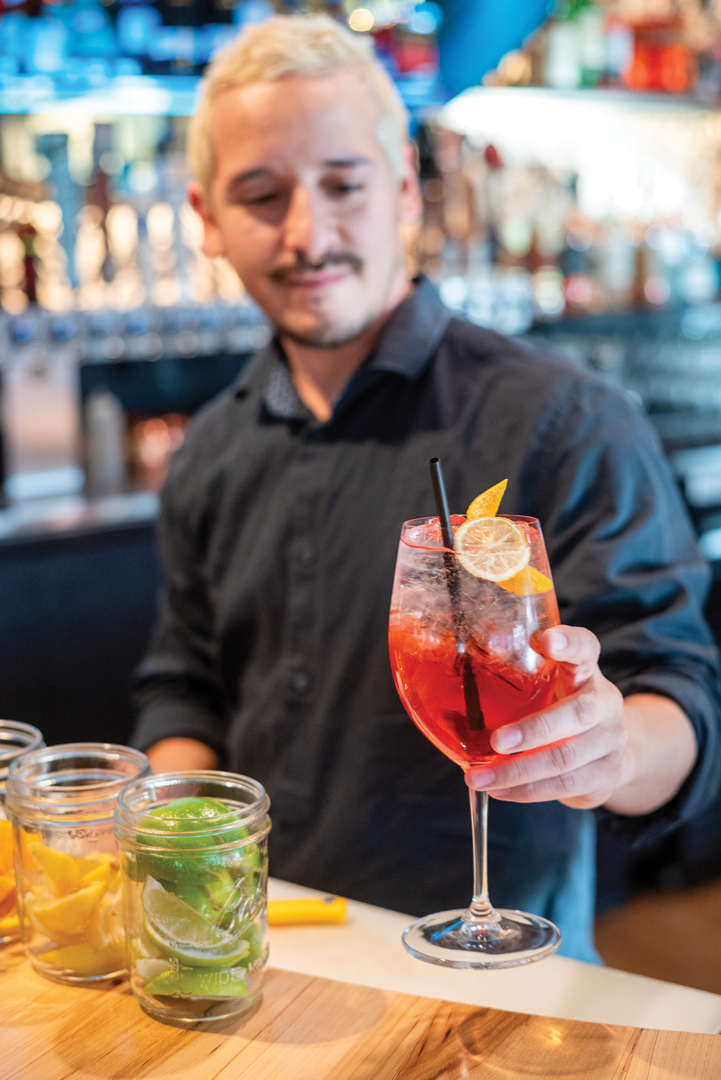
NA Aperol Spritz from Café Vino
Most mocktails can’t be made with the same ingredients as regular cocktails except with non-alcoholic spirits, Heberden says. However, he believes he discovered the first NA spirit that actually tastes like its boozy partner.
It’s Lyre’s Italian Spritz, which Heberden says tastes just like Aperol but without the buzz. “It really has that bitter orange flavor,” he says.
In Italy, a spritz is a common after-work drink. Heberden says this nonalcoholic version gives you those flavors without having a hangover the next morning.
Ingredients:
2 ounces Lyre’s Italian Spritz (NA)
6-8 ounces zero-proof sparkling wine (Café Vino uses one called “Fre”)
In a glass of ice, pour in the Spritz and top it with the zero-proof wine. Garnish with lemon.
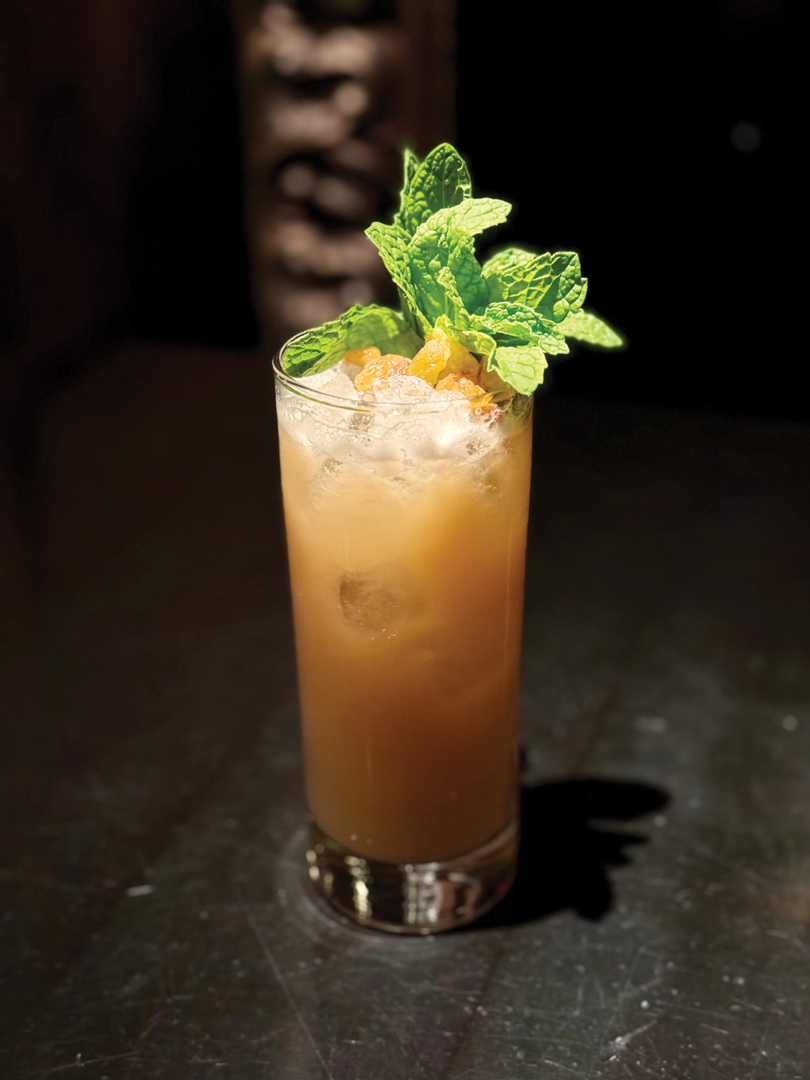
Raisin D’être from Social
This drink is the brainchild of Robertson, who says it uses the golden raisin syrup Social developed for their alcoholic Golden Ratio cocktail.
“I came up with this the day before the menu debuted,” he says. Social, like many other bars, gets recipes and ideas for both cocktails and mocktails from their bartenders.
“It’s a very collaborative process,” he says. “This one was mine. It’s just a pretty drink that gets a little sour from the lemon and is just perfect for winter.”
Ingredients:
1 1/2 ounces golden raisin syrup
(recipe below)
1 ounce lemon juice
3/4 ounce pineapple juice
2 dashes of NA aromatic bitters
About 2 ounces of ginger beer
Shake all ingredients except ginger beer with ice, pour into a chimney-style glass, top with ginger beer and garnish with a sprig or two of aromatic mint and some golden raisins.
Golden raisin syrup:
2 cups water
1 cup white sugar
6 ounces golden raisins
(by weight)
Combine water and sugar in a saucepan and cook over medium heat, stirring frequently, until all sugar has dissolved. Add in the golden raisins and reduce heat to low. Allow raisin and syrup mixture to heat for 30 minutes to rehydrate the raisins. With an immersion blender, blend raisins until a fine pulp forms. Strain through a fine mesh strainer, reserving liquid and pressing down on the solids with the back of a metal spoon to extract as much juice as possible. Discard solids.
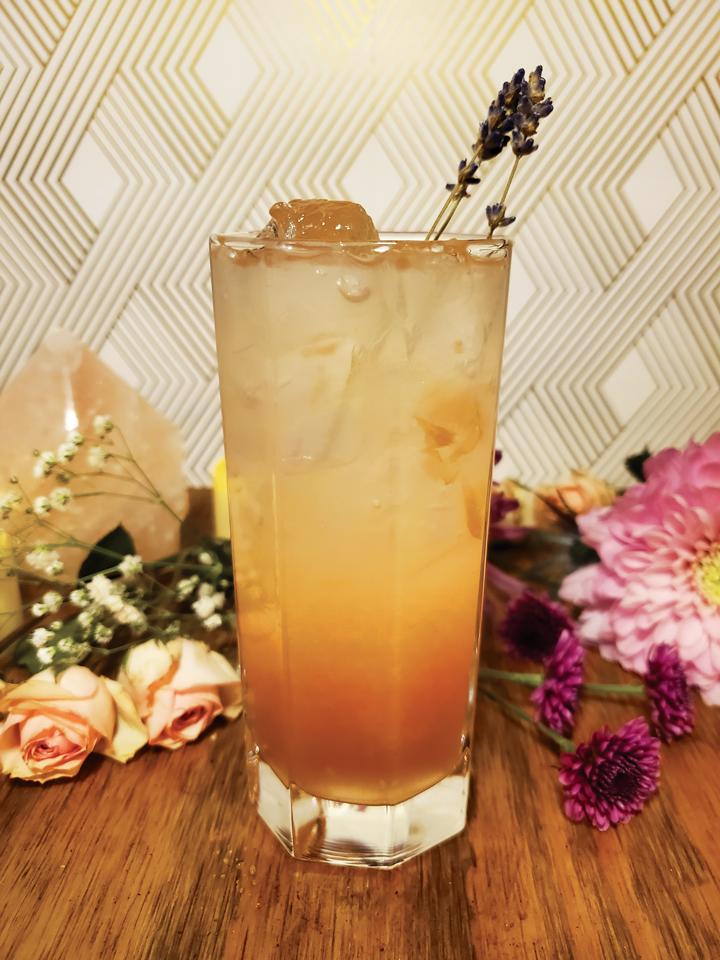
The Sensualist from Herbal Mocktails
Stultz says her drinks are inspired by the signs of the zodiac, and The Sensualist is for Taurus.
“They are ruled by Venus,” she says. “They want something pretty and sweet that hits all the senses together so they can focus on being grounded and enjoy the sensations.”
Ingredients:
1/3 cup fresh grapefruit juice
1 tablespoon lavender and basil
syrup (recipe below)
1 cup moon water (directions
below, but you can use regular
water instead)
Juice half of a large grapefruit or until you get 1/3 cup juice. Fill your glass ¾ of the way with ice. Pour grapefruit juice into a glass. Add 1 tablespoon lavender and basil syrup. Add more if you like it sweeter. Top with moon water.
Lavender and basil simple syrup:
1 cup water
1 cup sugar
1 tablespoon lavender buds
(food grade)
4 fresh basil leaves
Boil ingredients until sugar is dissolved. Strain and cool. Discard solids.
Moon water:
Put water in a jar with a lid and set it outside where it can sit in the moonlight. Make this the night before.
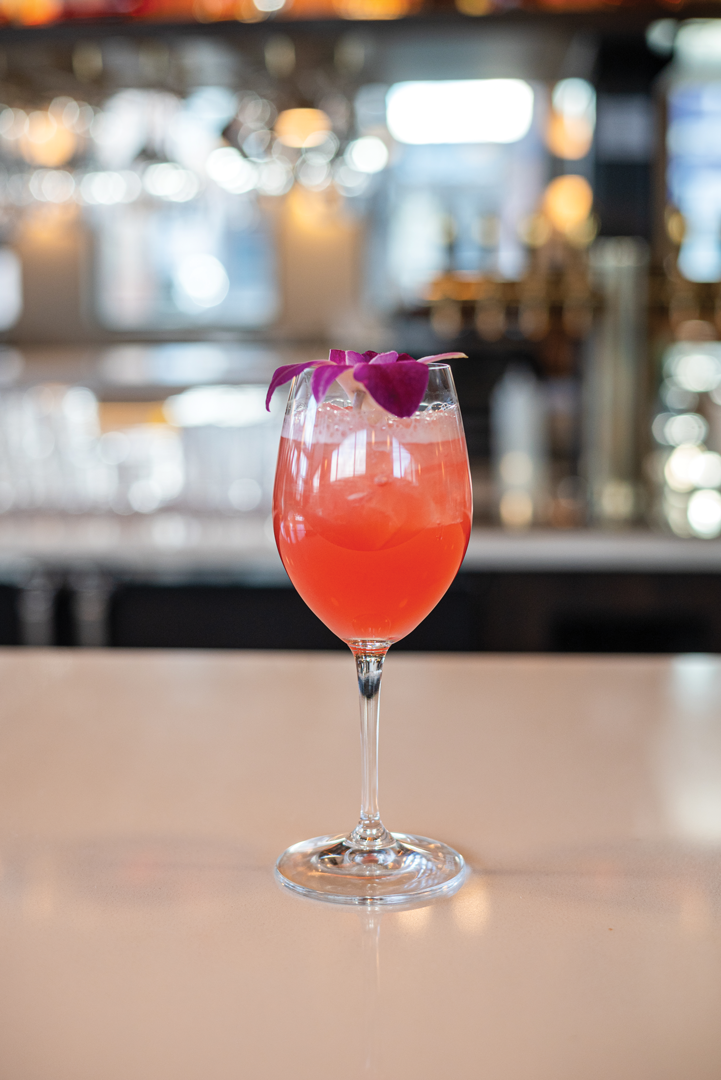
Another Pink Drink from Union Bar & Soda Fountain
Bowles says many cocktails on the menu at Union are pink, so she developed this drink for customers who want something that looks pretty but without the buzz.
“Everyone likes a pink drink,” she says. “This one looks really sweet, but it has a nice bitterness that really balances it out.”
Ingredients:
3/4 ounce Seedlip Grove
Non-Alcoholic Spirit
3/4 ounce Free Spirit, The Spirit
of Milano
3/4 ounce lemon syrup
1/2 ounce lemon juice
1/2 ounce tonic syrup
2 ounces soda water
Combine all ingredients except the soda water in a shaker with ice. Shake. Strain into a wine glass filled with ice and top with soda water.
Dry January: A Time to Reflect
Some quit drinking alcohol at the start of the new year—hence the term “Dry January”—to help reset their body after all the holiday festivities. It’s a great time to reassess your relationship with alcohol, according to a local expert who works with clients who struggle with alcohol addiction.
“Dry January is a good reset on goals for the new year, setting yourself up for a good year on a good foot. I think that’s the biggest motivation,” says Jesse Valenzuela, behavioral health clinician on the outpatient team at UCHealth Mountain Crest Behavioral Health Center in Fort Collins.
He adds that taking a month off from drinking provides some room for reflection. “It’s a time to consider what your relationship is with alcohol and the drivers behind it,” he says.
“Is it healthy or unhealthy?”
If you’re not sure how to answer that, Valenzuela recommends asking yourself these questions:
1. When are you using alcohol?
2. Why are you using it? For example, are you using it to connect with people in a social setting, or is it to detach or numb yourself?
3. Are you drinking alone?
4. Is alcohol inhibiting your ability to work?
If any of these questions raise concerns, it might be time to cut back on your alcohol consumption. Self-analysis can go a long way, Valenzuela says, though you may realize you can’t quit drinking all on your own.
“See what your community has to help,” he says. “Find those resources, or just talk to a therapist in general who can go deeper into why this is happening. A counselor will first try to figure out the source of the problem and look for patterns that keep coming back.”


